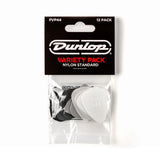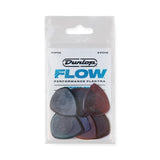Mastering Nitrocellulose: Best Practices for Painting Your Guitar
When it comes to guitar finishing, nitrocellulose stands out as a classic choice, renowned for its aesthetic appeal and vintage charm. Used by iconic guitar makers in the early days, this finish remains popular today. However, achieving a flawless nitrocellulose finish requires understanding its nuances and adhering to best practices. Let's delve into the intricate process of painting a guitar with nitrocellulose.
1. Avoid Pre-heating Aerosol Cans
Why Pre-heating is Not Recommended:
Although some guides suggest warming aerosol cans before use, this practice can lead to more harm than good, especially when working with nitrocellulose lacquers. Here's why we advise against it:
- Inconsistent Drying: Heating the aerosol accelerates the drying process unnaturally, which can trap moisture beneath the surface of the lacquer. This often results in a hazy, 'blooming' finish that mars the guitar's appearance.
- Pressure Risks: Pre-heating can increase the internal pressure of the aerosol can. Excessive pressure may cause the can to malfunction or, in extreme cases, burst, posing serious safety hazards.
- Unpredictable Spray Patterns: Heat can alter the viscosity of the lacquer unevenly, leading to inconsistent spray patterns and an uneven application, which is difficult to correct.
- Safety Concerns: Attempting to heat the can using direct heat sources, like a hairdryer or warm water, risks overheating or creating unsafe conditions, including potential explosions.
Best Practices for Aerosol Use:
- Room-Temperature Application: For optimal results, use the aerosol in a stable environment with temperatures between 15–25°C (59–77°F).
- Shake Thoroughly: To ensure proper mixing of the lacquer and propellants, shake the can vigorously for at least two minutes before use.
- Test the Spray: Always test the spray pattern on a piece of scrap material before applying it to your guitar.
By following these precautions, you can achieve the desired vintage look of nitrocellulose lacquer without compromising safety or quality. Skip the pre-heating, and let your craftsmanship—and your guitar—shine!
2. Application: Light, Thin Coats
Always begin with light, thin coats. Applying nitrocellulose in this manner ensures an even finish, reduces the risk of runs or drips, and allows for a gradual build-up. This method provides better control, letting you achieve the desired thickness and opacity over multiple applications.
3. Drying Time: Swift and Efficient
One of the advantages of nitrocellulose is its rapid drying time. Within about 20 minutes, it becomes touch-dry, allowing for multiple coats to be applied in a single session if needed.
4. Sanding Between Coats: Not Always Necessary
Contrary to many other paint finishes, nitrocellulose doesn't demand sanding between coats. Being solvent-based, the fresh coat "melts" into the one beneath, ensuring a smooth overlay.
However, for those seeking a near-perfect finish with minimal orange peel effect (a texture resembling the skin of an orange), a light buffing with 000 grade wire wool between coats can be advantageous. This smoothens the finish and reduces the amount of sanding required at the end. Remember, though, to meticulously remove any residue from the wire wool before applying the next coat to prevent contamination.
5. Transitioning Between Products
Moving from one type of nitrocellulose product to another, such as from a primer to a solid topcoat, is refreshingly straightforward. There's no need for a rigorous sanding process in between. Simply wait for 24 hours to ensure that the underlying layer is fully dry, and then you can proceed with the next product.
6. Patience After Completion
Once you've applied the final coat and achieved the desired look, the waiting game begins. Allow the guitar to rest for at least two weeks. This ensures the nitrocellulose finish fully hardens, setting the stage for a final sanding and polishing. This patience pays dividends, allowing for a smooth, high-quality finish that'll be both visually striking and durable.
In Conclusion
Painting a guitar with nitrocellulose might seem daunting at first, but with the right technqiues and patience, the process becomes less of a challenge and more of an art form. Adhering to these best practices will not only result in a beautiful instrument, but also one that carries the legacy and tradition of iconic guitars from yesteryears. Whether you're a seasoned luthier or an enthusiast giving your cherished instrument a new look, these guidelines will ensure your guitar stands out both on and off stage.


















